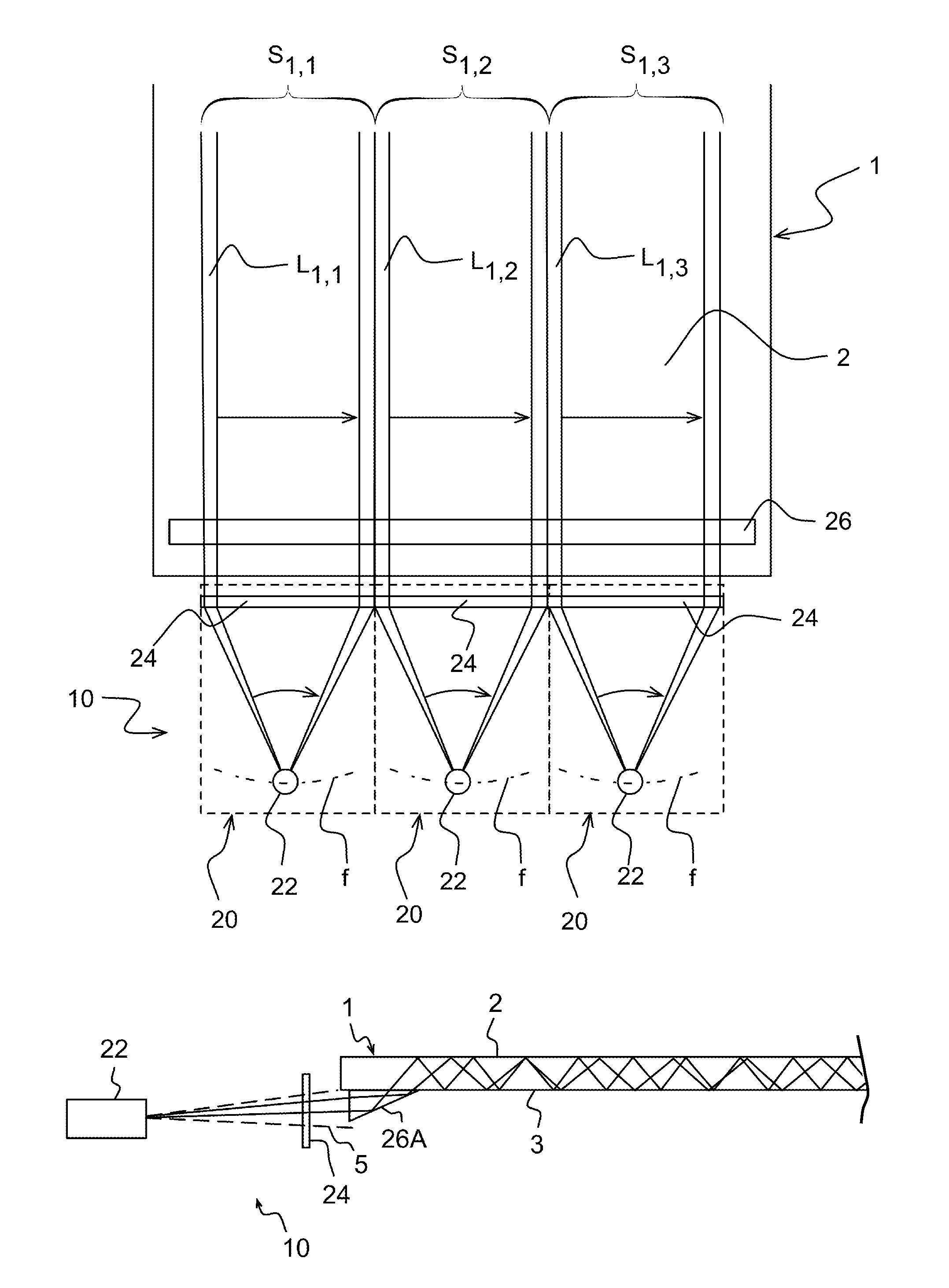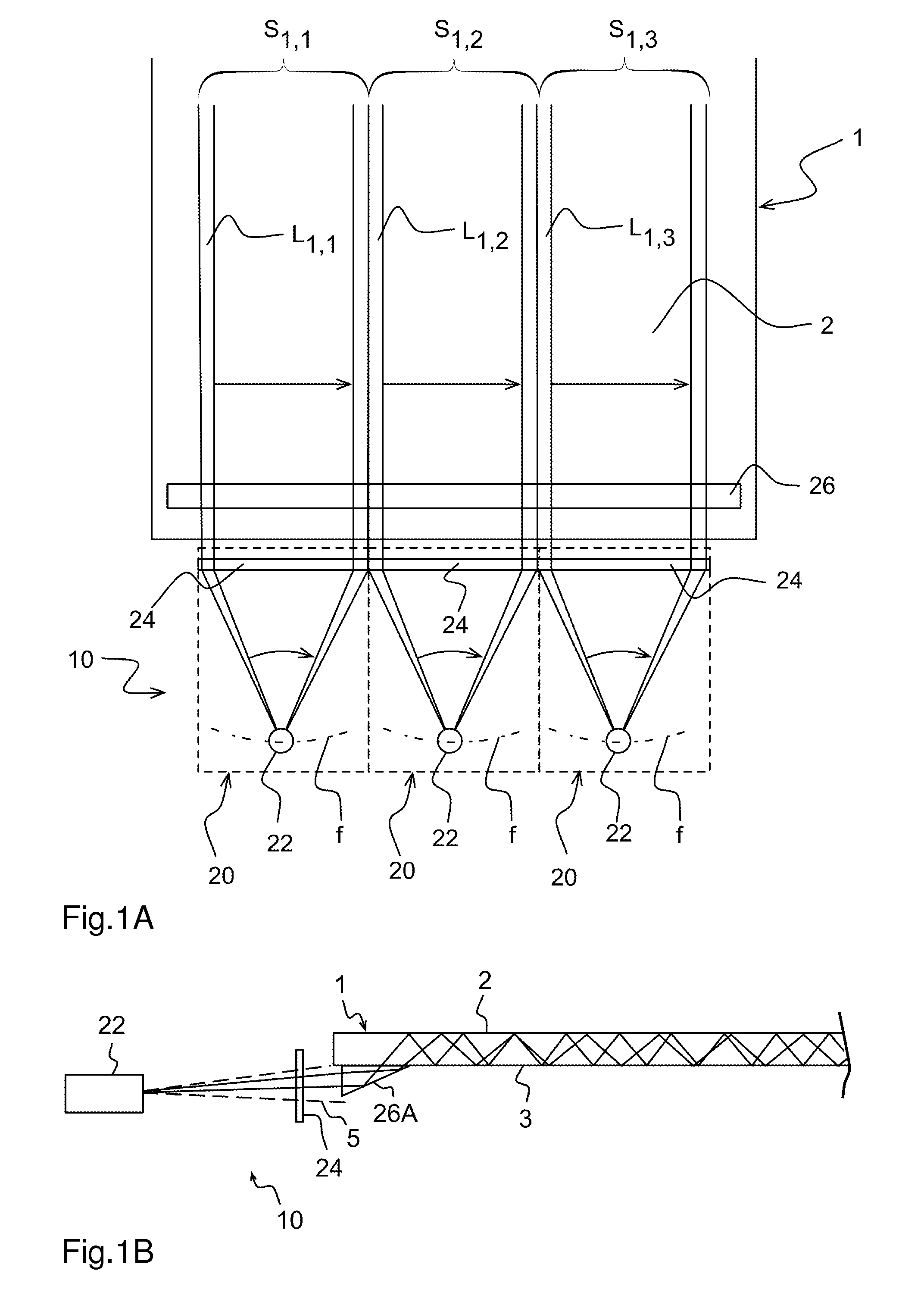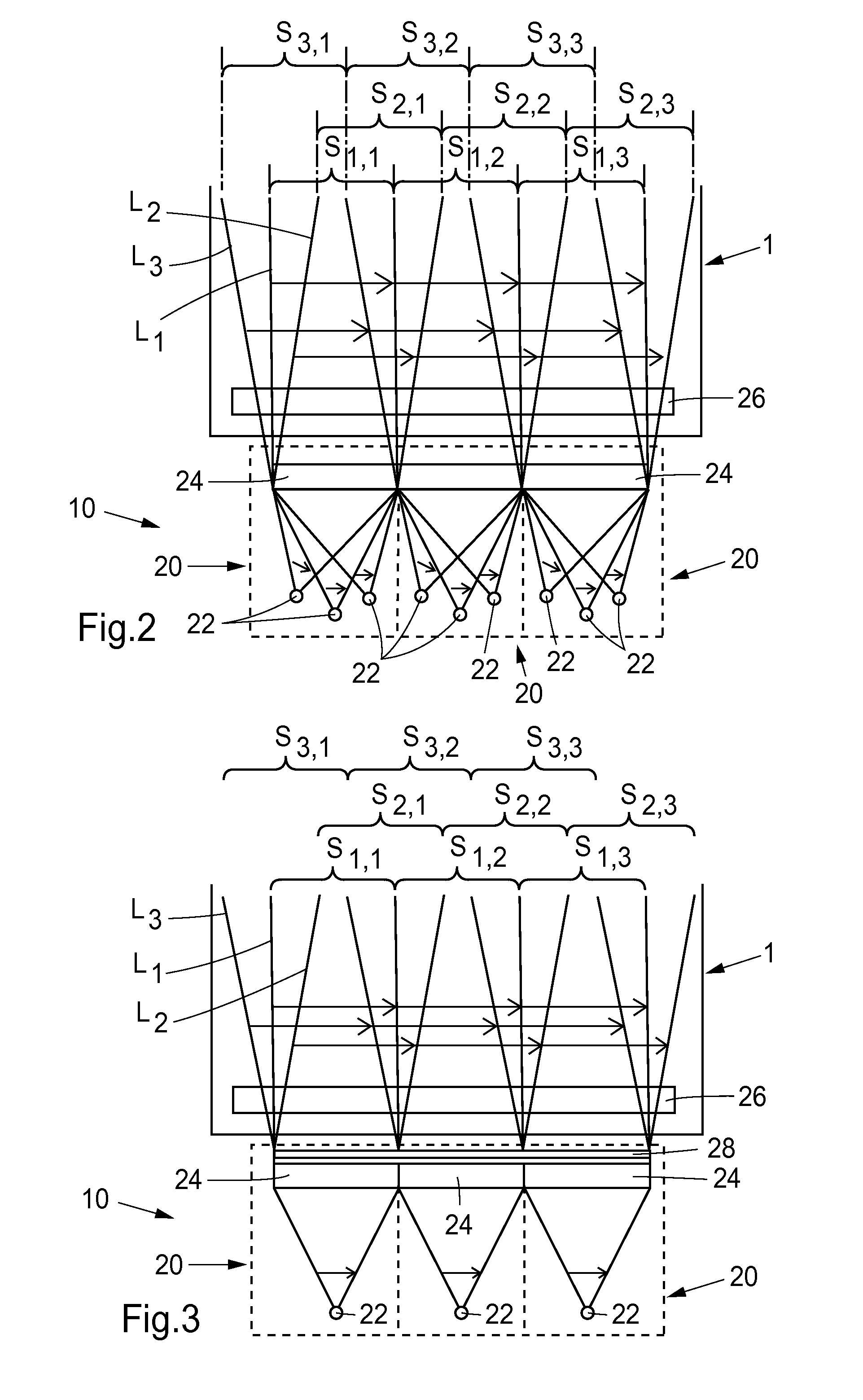Scanning FTIR systems for touch detection
a touch detection and scanning ftir technology, applied in the field of touch detection techniques, can solve the problems of unintentional variation, unintentional variation, and reduction of the impact of tolerances in the illumination arrangement, so as to reduce the footprint reduce the thickness of the touch-sensing apparatus
- Summary
- Abstract
- Description
- Claims
- Application Information
AI Technical Summary
Benefits of technology
Problems solved by technology
Method used
Image
Examples
Embodiment Construction
[0051]The present invention relates to a touch-sensitive apparatus that derives its touch sensitivity from light that propagates inside a transmissive panel while interacting with a touch surface of the panel. The interaction is formed when the propagating light is reflected by total internal reflection in the touch surface. When an object is brought into contact with the touch surface, the propagating light is disrupted (“frustrated”), causing an attenuation of the propagating light. By propagating light from different directions across the touch surface to form a grid of detection lines, and by measuring the energy of the received light for each detection line, the location of the object may be determined by processing the energy values for the detection lines.
[0052]The touch-sensitive apparatus thus utilizes the phenomenon of Frustrated Total Internal Reflection, FTIR. In the following; this type of touch-sensitive apparatus is denoted an “FTIR system”. FTIR systems have the pote...
PUM
 Login to View More
Login to View More Abstract
Description
Claims
Application Information
 Login to View More
Login to View More - R&D
- Intellectual Property
- Life Sciences
- Materials
- Tech Scout
- Unparalleled Data Quality
- Higher Quality Content
- 60% Fewer Hallucinations
Browse by: Latest US Patents, China's latest patents, Technical Efficacy Thesaurus, Application Domain, Technology Topic, Popular Technical Reports.
© 2025 PatSnap. All rights reserved.Legal|Privacy policy|Modern Slavery Act Transparency Statement|Sitemap|About US| Contact US: help@patsnap.com



